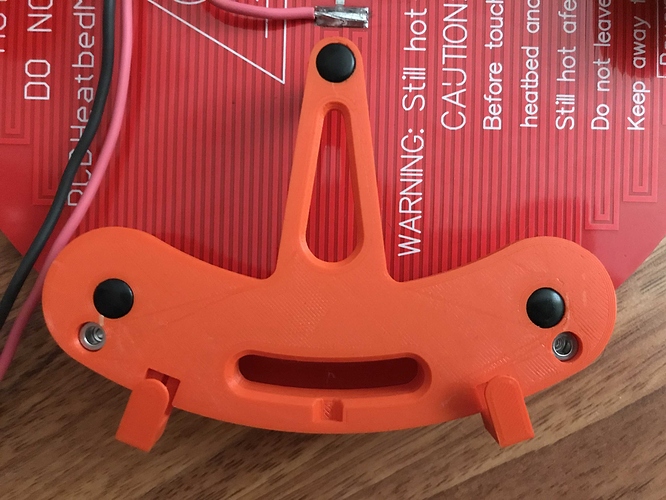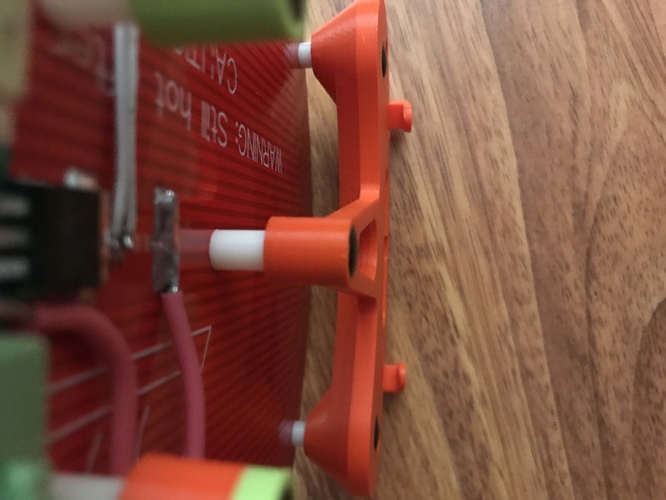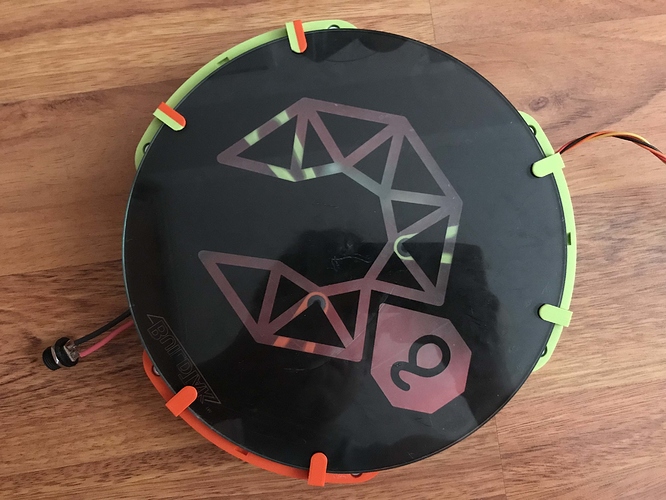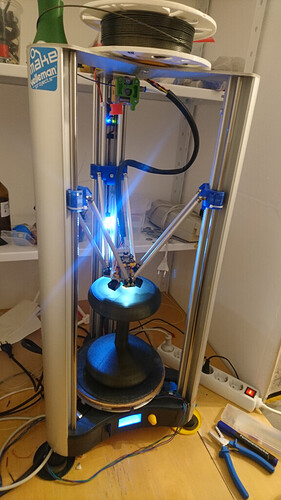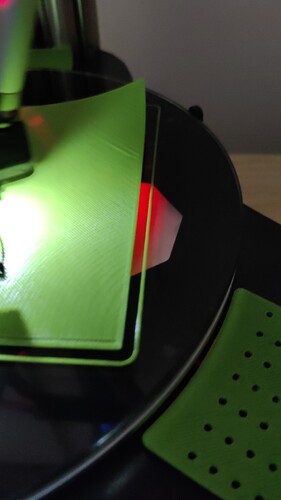I was gonna report here when I’m done altogether but here is my progress report since you’re asking for it ![]()
The easiest question first:
Does that green connector really survive 10A of current
They are rated for 12A, the bed draws around 8 at room temp, probably more at full temp. I don’t feel like I’m pushing them in any way.
The bed itself can reach 100°C and I feel it can easily go higher, probably to about 110. I’m not insulating the underside in anyway. The bed is fixed to a set of three risers that support it over the original glass bed in 9 places, those risers are what remains to be prototyped and finished, this version here is probably the 8th (or so) iteration. I’m nearing completion I think because I’m quite happy with the design and I have alredy printed succesfully using the latest version of the prototype:
This is the first view, on the printer, you can get the idea of how it’s all arranged.
This is the underside without the glass bed attached, the clips hold the glass tight against the rubber feet and are retained in the riser because I know I’d loose them immediately.
Here you can see how the riser is insulated from the bed, I used nylon standoffs that are embedded 2mm into the plastic and through them the bed is fastened using an M3 screw and an embedded rivet nut, I like using rivet nuts for 3D pinted parts because they are like embedding a regular M3 nut and a washer at once. Currently I use 6mm and 12mm standoffs but I will increase their length because nylon conducts heat a little too well, the current risers are PLA which makes them easily squish and loosen when hot, I plan to finally print them in PETG.
And this is the underside with the glass clipped in place, ignore the different colors, I’m printing with whatever scraps of oddly colored filaments I’ve got ![]()
This whole assembly simply rests where the original would and the piezos work fine with it, I needed to increse the sensitivity slightly but that might be because the clips where touching the aluminum ring. I made them thin enough (there’s about 1.75mm between the glass bed and aluminum ring for the clip) but the way they are designed means they print with supports and the overhang made the parts too thick. I love the limitations of FDM…
Anyway, I will post more pictures and my CAD models when I’m finally done fiddling with the design ![]()


